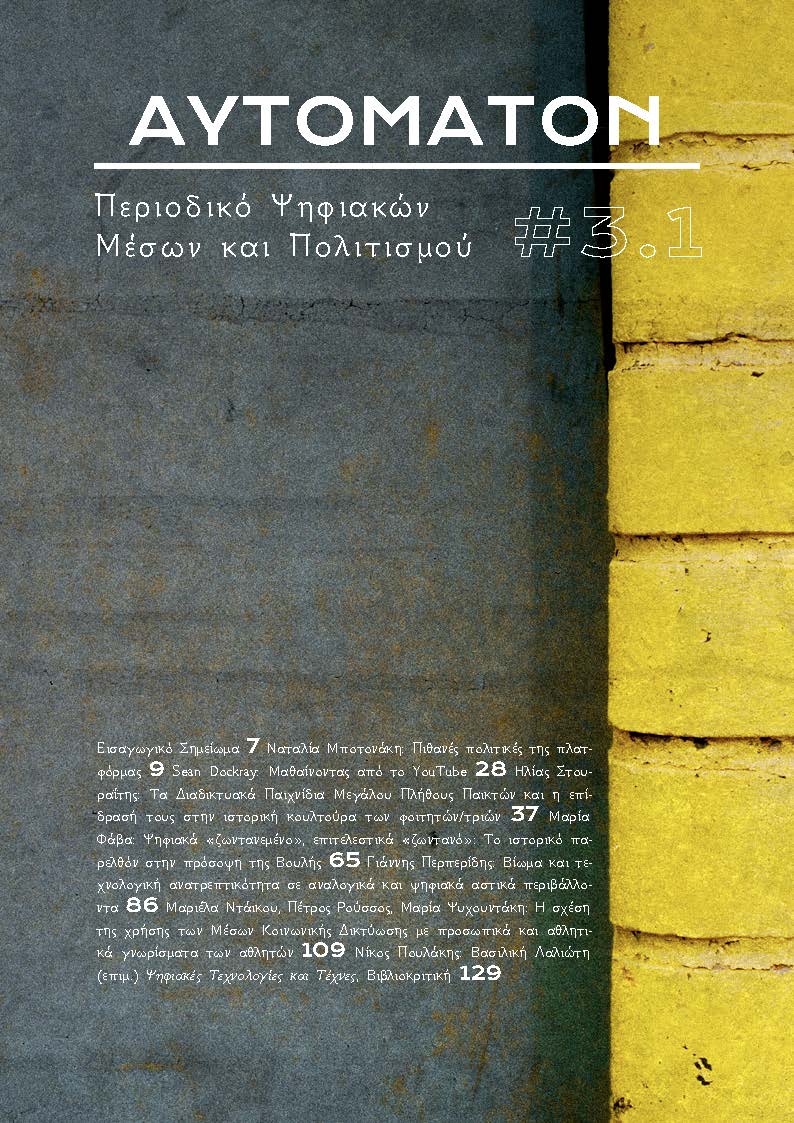Digitally “Alive”, Performatively “Live” The Historical Past on the Hellenic Parliament Façade

Abstract
Towards the end of 2020 and throughout 2021 -the year in which the Greek state celebrated the 200th anniversary of the Greek Revolution and in the midst of the covid-19 pandemic, digital historical narratives were projected onto the façade of the Hellenic Parliament. The initiative was spearheaded by the Hellenic Armed Forces, the “Greece 2021” Committee and the Hellenic Parliament, using projection mapping technology. What happens when digital technology converges with “history coming alive” on the façade of the most emblematic building of the Greek state? By examining the transformation of the Parliament building into a digital screen, this essay presents a significant case study that underscores the coordination of official public history with digital economy networks and highlights “liveness” as the most distinctive and urgently claimed understanding of “historicity” in contemporary society.
Article Details
- How to Cite
-
Fava, M. (2024). Digitally “Alive”, Performatively “Live”: The Historical Past on the Hellenic Parliament Façade. Αutomaton: Journal of Digital Media and Culture, 3(1), 65–85. https://doi.org/10.12681/automaton.38846
- Section
- Articles

This work is licensed under a Creative Commons Attribution 4.0 International License.
Authors wishing to publish articles in this journal agree to the following terms:
1. The Authors retain the Copyright and grant the journal the right of first publication while at the same time the copyright of the work is protected under the Creative Commons Attribution License which allows third party licensees to use the work as they wish provided they acknowledge the work's authorship and initial publication in this journal.
2. Authors may enter into separate additional contractual arrangements for the non-exclusive distribution of the published journal version of the work (for example, posting it to an institutional repository or publishing it in a book), with acknowledgment of its initial publication in this journal.
3. Authors are allowed and encouraged to post their work online before and during the submission process (e.g. on their website) as this can lead to productive exchanges as well as earlier and more citations of published work (See The Effect of Open Access).


